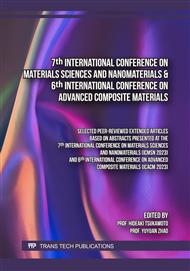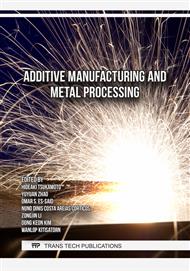p.31
p.39
p.49
p.59
p.65
p.73
p.79
p.87
p.93
Selective Metallization on 3D Substrates for MIMO Antennae
Abstract:
Multiple-input multiple-output (MIMO) antenna technology owes its low weight and energy-saving electronic applications to the use of polymer substrates. Applying metallization to obtain conductive substrates involves spraying untreated molds with a gel to form a temporary protective coating. The coating is then partially removed with a laser to expose areas for metallization. After that, the exposed areas are modified with a palladium-tin (Pd-Sn) colloidal catalyst to enhance the adhesion between the insulating surface and copper deposition. It’s with these three steps that the modified areas become selective to metallization. It’s observed that copper deposited incessantly at a high speed of 5 μm/hr after above treatment, and formed a dense layer with a low resistivity. The conductive patterns plated on the 3D substrate render the MIMO antenna system applicable to wireless local area network (WLAN) with two switchable frequencies, as evidenced by the simulation tests in which the antennae had ECC values below 0.2, a VSWR of 3 to 1, and a radiation efficiency around 50% at 2.4 GHz and 37% at 5.8 GHz. The electroless plating technology used above adds to a duplicable MIMO-antenna manufacturing process of low temperature and cost.
Info:
Periodical:
Pages:
65-70
Citation:
Online since:
December 2023
Authors:
Keywords:
Price:
Сopyright:
© 2023 Trans Tech Publications Ltd. All Rights Reserved
Share:
Citation:



